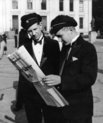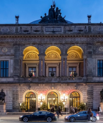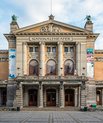The Quick Read
This is a list of all 'Quick Reads' in the order they were published. Quick Reads are intended to provide quick, evidence-based information on a particular topic. They are generally short, encyclopaedic entries of about 1000 words on, for example, specific, named companies, brands, organisations, themes within a subject area etc, or entries on particular terms used in Nordic languages which are not necessarily easily to translate without further discussion. To customise your search, use the 'category' buttons, or the search function.









